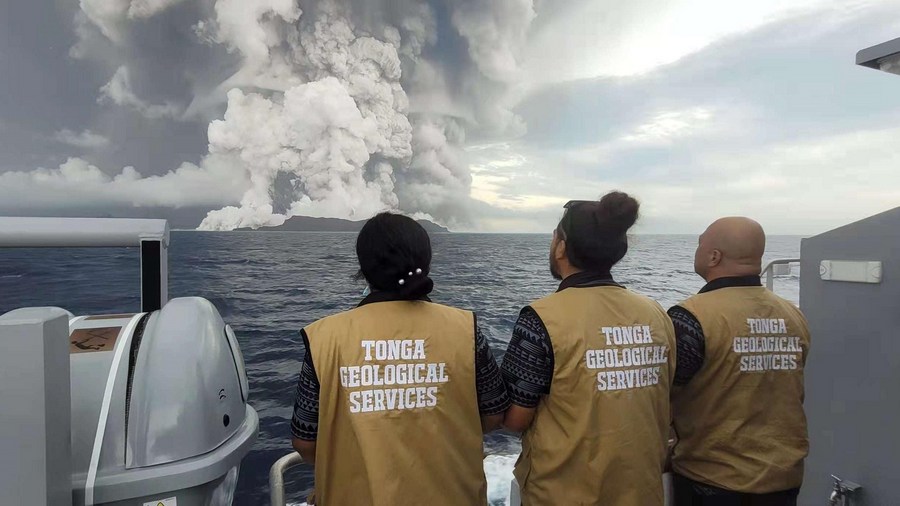A recently released shocking geological discovery: a rock weighing up to 1,300 tons, located more than 200m inland on Tongatapu Island (Tonga), has been identified as a "victim" of an ancient super typhoon - possibly one of the strongest super typhoons ever recorded in the history of the Earth.
According to Interesting Engineering, the rock is named Maka Lahi, with a giant size of 14x12x6.7m - equivalent to a multi-storey building.
Although hidden in the forest and trees, quite far from the coast, scientists confirmed that it was swept away by a Tsunami from a cliff over 30m high, thanks to waves up to 50m high!
Dr Martin Köhler from the University of Australia (Australia) was the one who accidentally discovered this rock during a geological survey of the Tonga coastal area.
"We are surveying the coastal area, so a few farmers just showed us a very large rock located in their land. When I arrived, I was really stunned, it was so big and too far from the coast, Köhler recalled.

After building a 3D model and analyzing the terrain, the research team determined the possible location where the rock was dropped - a cliff 30m higher than the current sea level. From there, they calculated that only a typhoon about 50m high and lasting 90 seconds would be enough to move Maka Lahi.
classical analysis shows that the event occurred about 7,000 years ago, during the Holocenes - the post- ice age, starting 11,700 years ago. Such super sunsones could originate from underwater earthquakes or volcanic explosions two common phenomena in the ring of fire of the Pacific Ocean.

We believe this is rare evidence of a prehistoric super typhoon, and the fact that Maka Lahi exists today helps us look back at the past to predict the future, said Dr. Annie Lau, co-author of the study.
The discovery of Maka Lahi is not only important for Tonga but also has a great impact on the assessment of the risk of global sunlides. The fact that a rock weighing thousands of tons could be thrown deep into the mainland by a Tsunami shows the unpredictable power of the ocean, especially in vulnerable coastal areas.
From the 2022 Singapore Tsunami disaster to a series of sunny systems that have swept through Southeast Asia, Japan, and Chile, scientists emphasize that studying geological history is the key to surviving the prosperous seas.
The existence of Maka Lahi is like a giant warning sign, reminding people about the ancient and present power of sunflowers.
Its not just a rock. It is a warning for coastal communities around the world, the research team emphasized.







